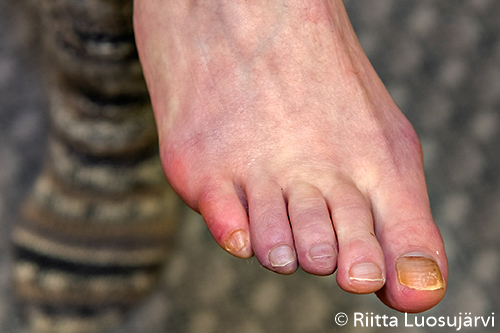Raynaud's Phenomenon in the Toes and on the Top of the Foot

Raynaud's phenomenon in the toes and on the top of the foot. Tricolour changes can be seen: the 5th toe is bright red, the 3rd and 4th toes are blue, and on the top of the foot at the base of the toes, the skin is pale. Also note the intense colours on the nail bed!
Picture and text: Riitta Luosujärvi
Primary/Secondary Keywords
- Raynaud
- Raunaud's phenomenon
- Raynaud's syndrome
- RP
- Tricolor
- toes
- foot